Elon Musk upbeat on Starship test flights
By Jonathan Amos
Science correspondent
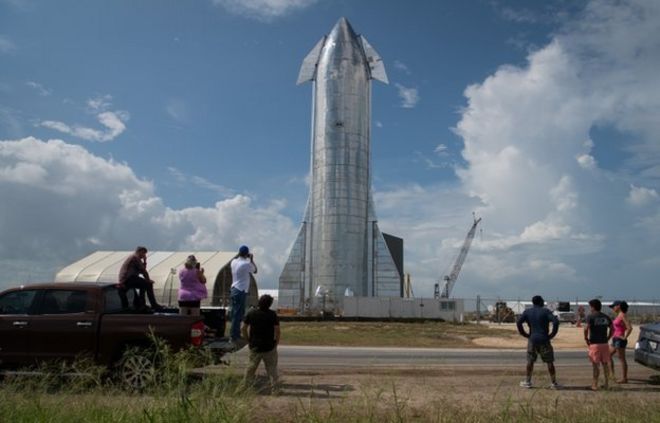 The Mk1 Starship will begin high-altitude tests in the coming weeks
The Mk1 Starship will begin high-altitude tests in the coming weeks
The American entrepreneur Elon Musk has given a further update on his Starship and Super Heavy rocket system.
He plans to use the new vehicles to send people to the Moon and Mars, and also to move them swiftly around the Earth.
The SpaceX CEO is in the process of building prototypes and plans to start flying them in the coming months.
The Mk1 version of his Starship would begin high-altitude tests in the next one to two months, he said.
"This is the most inspiring thing I've ever seen," the entrepreneur told an audience gathered at the company's Boca Chica, Texas, facility where the prototype has been assembled.
"So this thing is going to take off, fly to 65,000 feet, about 20km, and come back and land. So that giant thing, it's really going be pretty epic to see that thing take off and come back."
The 50m-tall Starship will eventually fly atop its booster, the Super Heavy.
A first test flight of this booster, carrying a Mk3 Starship, could go to orbit as early as next year, Mr Musk said.
SpaceX engine testbed makes minute-long jump
Musk promises '10km Hyperloop tunnel'
Leaky component led to SpaceX explosion
Starship will be the most powerful rocket in history, capable of carrying humans to the Moon, Mars, and beyond
Both parts of the system, which together would stand 118m tall on the launch pad, are being designed to be fully reusable, making propulsive landings at the end of their mission.
Mr Musk has given updates on the development of the new rocket system at regular intervals. He wants the future vehicles ultimately to replace his current fleet - the Falcon 9 and its bigger cousin, the Falcon Heavy.
He already has one customer on the books for a Starship flight - the Japanese Billionaire Yusaku Maezawa, who wants to go around the Moon and back with a group of artists.
Three Raptors on a Starship
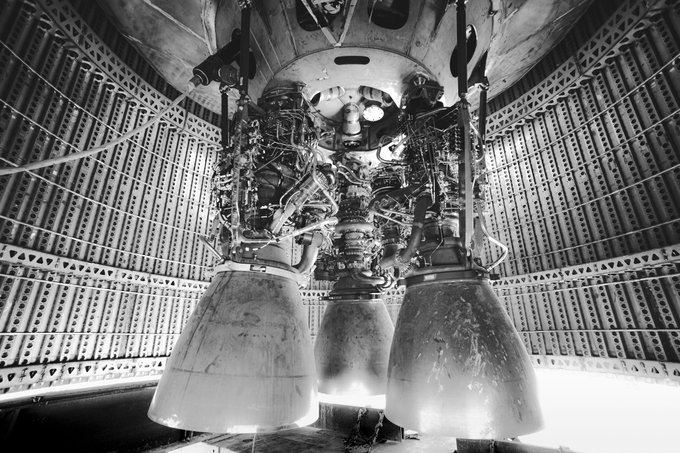
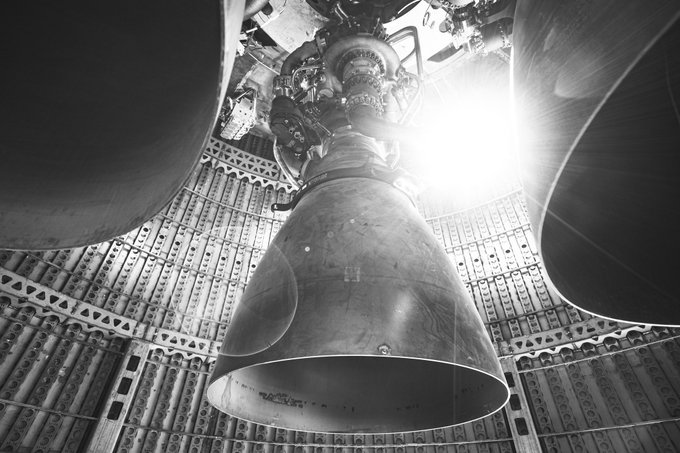
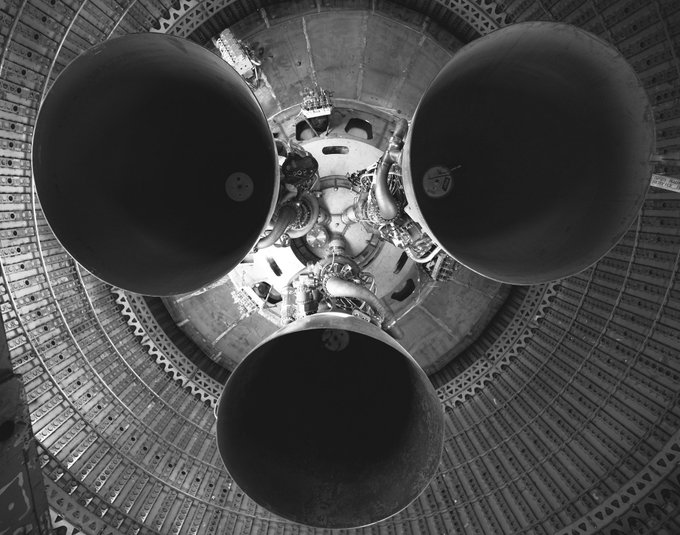
Speaking at the Boca Chica event, the CEO outlined his latest thinking on the use of materials, changes in aero surfaces and the progress being made with the methane-burning Raptor engine that will power both the Starship and the Super Heavy.
The SpaceX boss explained his switch to using steel over carbon fibre in building the Starship was in part down to cost. Steel is $2,500 per ton whereas carbon fibre is $130,000 per ton. The Starship will feature heat-resistant tiles in those areas likely to experience the highest temperatures during a descent back through the atmosphere.
He also pointed to the four fins - two at the front, two at the rear - that will help control that re-entry; and to the Raptor engines. The Mk1 prototype has three, but operational versions will have six.
The Super Heavy booster, on the other hand, could have up to an extraordinary 37 Raptors all firing in unison.
Mr Musk will be using the Kennedy Space Center in Florida for some launches, but Boca Chica also features in his flight plans.
This, he recognises, would mean considerable disruption for residents, and the SpaceX company is therefore trying to buy people out.
"We've made an offer to that effect," he said.
Mr Musk has been criticised in the past for obsessing about going to Mars when there are many issues that need attention here on Earth.
He told his audience that the problems on our planet were not a reason to stop looking outwards.
"There are many troubles in the world, of course, and these things are important and we need to solve them. But we also need things that make us excited to be alive, that make us glad to wake up in the morning and be fired up about the future, and to think, yeah, the future is going to be great. Space exploration is one of those things."
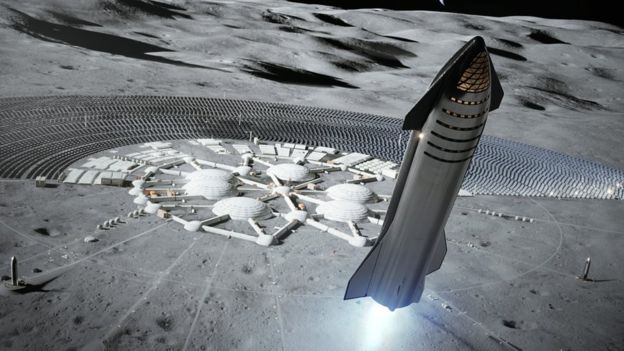
Mr. Musk says a Starship could put 100 people on the Moon
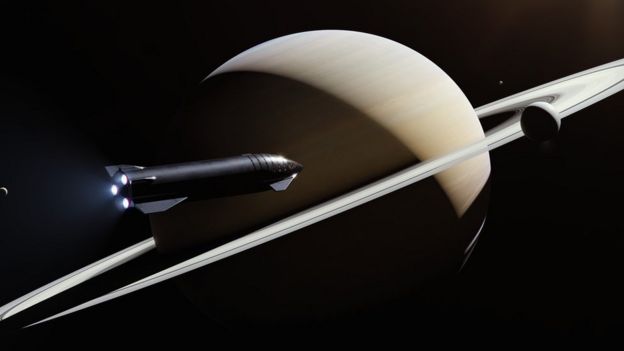 SpaceX artwork envisions Starship missions going further out across the Solar System
SpaceX artwork envisions Starship missions going further out across the Solar SystemRelated Topics
SpaceX
Space exploration
Elon Musk
No comments:
Post a Comment
Note: Only a member of this blog may post a comment.